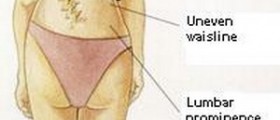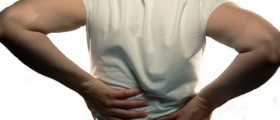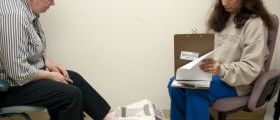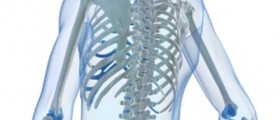
Normally the cervical spine is curved in order to stabilize the head and spine and sustain balance. The cervical spine is in a C-shape and the C is pointed toward the back of the neck. However, in some people this curve may become too deep, leading to a condition known as cervical lordosis.
Causes of Cervical Lordosis
Cervical lordosis is abnormal inward curvature of the cervical spine which can cause the head to appear pushed forward. Also, the curve in the cervical spine may straighten out, causing the neck to completely straighten. This condition is known as cervical kyphosis.
Cervical lordosis can have several causes. Most commonly, cervical lordosis occurs as a result of maintaining incorrect posture or due to injury, trauma, stress and strain to the neck. In some individuals cervical lordosis can be inherited or a congenital condition.
Osteoporosis, the condition responsible for loss of bone density and thinning of bones, can affect the neck region and cause cervical lordosis. Apart from weakening cervical vertebrae and causing cervical lordosis, osteoporosis also makes the bones more fragile and susceptible to fractures. Finally, obesity as well as achondroplasia can alter normal curve of the cervical spine and lead to cervical lordosis.
Symptoms of Cervical Lordosis
Most often, cervical lordosis does not cause pain or other symptoms. Usually, the affected person is not aware of having abnormal curve in the cervical spine for many years because the condition progresses very slowly. However, the person may recognize the problem when the curve is considerably altered and the head starts to appear as if it has been protruding forward.
In rare cases, people with cervical lordosis can suffer from neck pain. This pain may result from the compression in the neck region. This symptom is mainly experienced by those who suffer from cervical lordosis due to trauma.
Diagnosis and Treatment for Cervical Lordosis
Changes in the spine curve can be observed during the physical examination. Diagnostic tests such as MRI and X-ray scan can determine severity of cervical lordosis and whether it is caused by some neurological condition.
There are several treatment options for cervical lordosis. Usually, the condition does not have to be treated. However, if cervical lordosis is severe, produces pain and discomfort and limits the range of motion, it can be treated with pain relievers. Most commonly, treatment for cervical lordosis involves physical therapy which strengthens the spine and provides with correction of posture and positioning.
Bracing is another treatment option. Braces are used to maintain normal spine alignment and correct the curvature. Support pillows can be also used to improve the curvature of the neck. Severe cervical lordosis has to be treated surgically.





-Causes,-Symptoms,-Diagnosis,-Treatment_f_280x120.jpg)











Your thoughts on this
Loading...